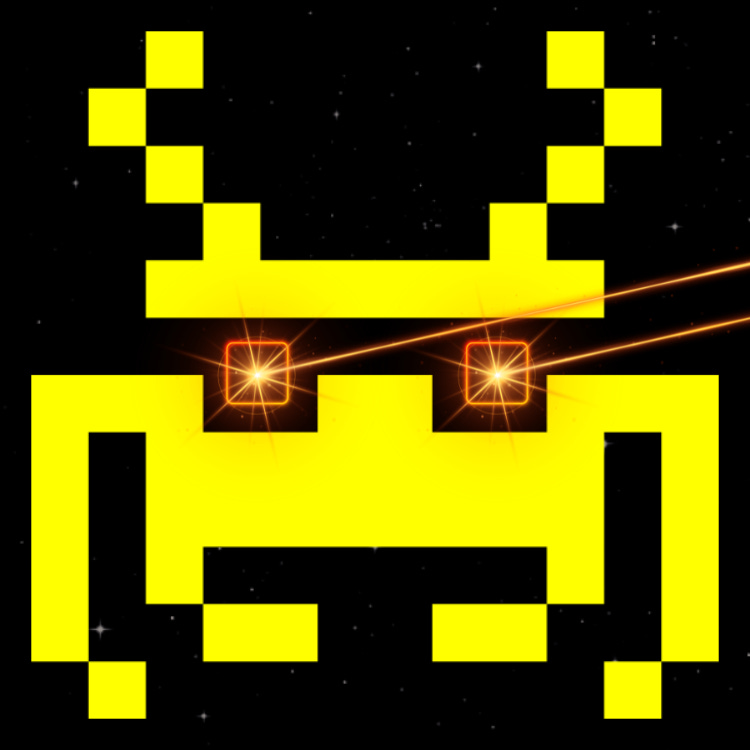What is Digital Matter Theory (DMT)?
And Why Stacks Invaders is Breaking New Ground
Inspired by an iconic 80s arcade game, Stacks Invaders is more than nostalgia—it’s a technological leap forward. Created by @jackbinswitch and @imbanksia, the project introduces an innovative framework known as Digital Matter Theory (DMT) on the Stacks blockchain. It’s the first block generative art project on Stacks and may just redefine what NFTs can be.
What is Digital Matter Theory (DMT)?
Digital Matter Theory (DMT) is an emerging concept in blockchain technology that deals with generating onchain digital substances from patterns in blockchain data. Unlike traditional NFTs, which often store files off-chain via IPFS or Arweave, DMT-based assets are generated entirely onchain, using lightweight algorithms and metadata.
Think of DMT as the blockchain’s version of chemistry: instead of molecules and atoms, developers use patterns in block data to create digital matter. Just as atoms form physical substances in the real world, DMT lets us use digital “building blocks” to form entirely new digital materials—completely onchain and tamper-proof.
Bitcoin Roots, Stacks Innovation
The idea of DMT isn’t new. In the Bitcoin ecosystem, early projects like Ordinals, Rare Sats, and Bitmap Theory hinted at the potential:
Ordinals: Assigns numismatic value to individual satoshis.
Rare Sats: Identifies and collects uniquely placed sats.
Bitmap: Turns Bitcoin blocks into parcels of digital land.
All of these reflect an evolving philosophy: that blockchain data can be used to define and generate new forms of digital reality.
But where Bitcoin laid the groundwork, Stacks Invaders takes the concept further—adding generative art, smart contracts, and interactivity.
DMT vs. Ordinals: What's the Difference?
While Ordinals and DMT both involve onchain inscriptions, they diverge in key ways.
“Ordinals inscribe entire files directly on the blockchain,” explains Ian (@imbanksia). “With DMT, we only store the essential metadata and logic—allowing real-time generation without bloating the chain.”
Here’s a breakdown:
Feature Ordinals Digital Matter Theory (DMT) Data Storage Full files (images, text, etc.) Metadata + algorithm only Efficiency Heavy on block space Lightweight, scalable Interaction Static content Dynamic, real-time generation Tech Stack Bitcoin Ordinal protocol Stacks smart contracts + SVG generation
In Stacks Invaders, the image isn’t saved as a static file. Instead, a smart contract uses the current Stacks block number to generate an SVG image dynamically. When a user clicks "Preview Next Invader" on the site, it queries the blockchain and renders the visual—unique to that moment in time.
How Does Stacks Invaders Work?
Every new Stacks block (roughly every 10 minutes) unlocks the opportunity to mint a single Stacks Invader.
That’s right—one mint per block. With 4,995 total pieces, it would take about 34 days for the collection to mint out at maximum pace.
What Makes Each Invader Unique?
The art is generated using elements from the Stacks block itself:
Last two digits of the block define the color.
Other digits shape the form and pattern of the SVG image.
No two Invaders are the same—each is cryptographically bound to its originating block.
To mint, users simply connect their Stacks-compatible wallet and click “Mint” when a new block hits. However, the race is competitive—only one NFT per block means speed and timing matter. Attempting to mint more than once in a single block could lead to failed transactions and wasted fees.
A Community-Powered Project
Although Jack and Ian pioneered the idea, Stacks Invaders is built by the community. It encourages experimentation and invites others to build on top of the protocol, remixing, extending, or creating entirely new projects using DMT.
This spirit of openness mirrors the best of Web3: decentralized, collaborative, and creatively driven.
Why It Matters: Stacks, DMT, and the Future of NFTs
Stacks Invaders is more than an NFT collection. It’s a proof of concept for a new way of thinking about digital art and ownership.
Fully onchain generative art
Efficient, scalable data models
A new NFT standard built on smart contracts
Direct tie between blockchain data and digital output
In many ways, it answers a long-standing Web3 question:
“How can we make digital assets as real, permanent, and provable as physical ones?”
With Digital Matter Theory, we may finally have an answer.
Final Thoughts
Stacks Invaders and Digital Matter Theory mark a turning point in the evolution of NFTs. By blending onchain logic, generative design, and interactive minting, the project pushes the limits of what’s possible on the blockchain.
More importantly, it invites everyone—artists, developers, collectors—to imagine a future where digital matter behaves as persistently and meaningfully as the real world.
Welcome to the age of onchain substance.
Welcome to Stacks Invaders.
Explore the project → stacksinvaders.com
Follow the creators → @jackbinswitch, @imbanksia


